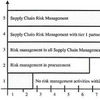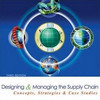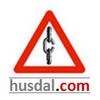 This the first post in a series that reviews and translates into English some of the content in the book “Säkra företagets flöden” or “Secure the company’s flows” as I have translated it. The book was published in 1999 by the Swedish Emergency Management Agency and is a handbook in Business Continuity Management and Supply Chain Risk Management. This post will take a general look at what can cause a disruption to normal business operations and which question every business should ask when starting to analyze its own risk situation.
This the first post in a series that reviews and translates into English some of the content in the book “Säkra företagets flöden” or “Secure the company’s flows” as I have translated it. The book was published in 1999 by the Swedish Emergency Management Agency and is a handbook in Business Continuity Management and Supply Chain Risk Management. This post will take a general look at what can cause a disruption to normal business operations and which question every business should ask when starting to analyze its own risk situation.
Getting the big picture
First off, every business is unique, and located with a certain framework of circumstances that need to be looked at when analyzing disruption risk. The following questions are meant as a first step towards getting a clearer picture for further analysis:
Markets
What is our market? Have we ever done any kind of market analysis?
Product development stage
In what development stage are our products? Which are fully developed? Which are still in design or just concepts? Which are mature, and which are ready to be terminated?
Competition
Who are our customers? Who are our competitors?
Dependencies
Is our company dependent on certain customers, or are we dependent on certain government rules and regulations that could change?
Contracts
What are our contracts like? Do we have contracts that ensure quality, deliveries, transports? Do we have access to spare parts and maintenance, particularly for highly specialized equipment?
Inflows
How dependent are we on incoming flows, raw materials, components, spare parts, and from where do they come?
Core competence
What are we good at? What is our unique business knowledge that sets us apart from our competitors, and what if we suddenly lost that advantage?
Confidentiality
How sensitive or confidential are our business processes? Can we outsource or offshore them?
Improvements
Have we ever wanted to make improvements or obtain new and better equipment?
Failure
Have we ever had failures or outages? How long does a repair or downtime typically last?
Cost of outages
What were the costs of previous failures and outages? What are our fixed costs?
Assets
What are our facilities worth? What would replacing or rebuilding them cost?
Supply
What do we now about our suppliers and their vulnerabilities? How about our own reliance on raw materials, components, spare parts, water supply, electricity, computers, transports and other infrastructure?
Step One
These are just some of the questions a company should start asking when analyzing its own vulnerabilities. My idea would be to gather a cross-sectional team and do some brainstorming around this. One thing for sure is that such an undertaking will raise the awareness as to how vulnerable (or not) the company is, and that is a first step.
In my next post I will take a closer look at how to analyze suppliers and subcontractors.
Reference
Giertz, E., et al. (1999) Säkra företagets flöden, Silfgruppen, Stockholm. ISBN 91 7097 056-4
Related
- husdal.com: How to secure your supply chain – 1/7
- husdal.com: How to secure your supply chain – 2/7
- husdal.com: How to secure your supply chain – 3/7
- husdal.com: How to secure your supply chain – 4/7
- husdal.com: How to secure your supply chain – 5/7
- husdal.com: How to secure your supply chain – 6/7
- husdal.com: How to secure your supply chain – 7/7












